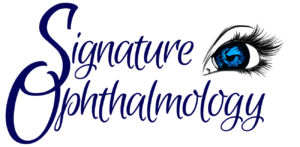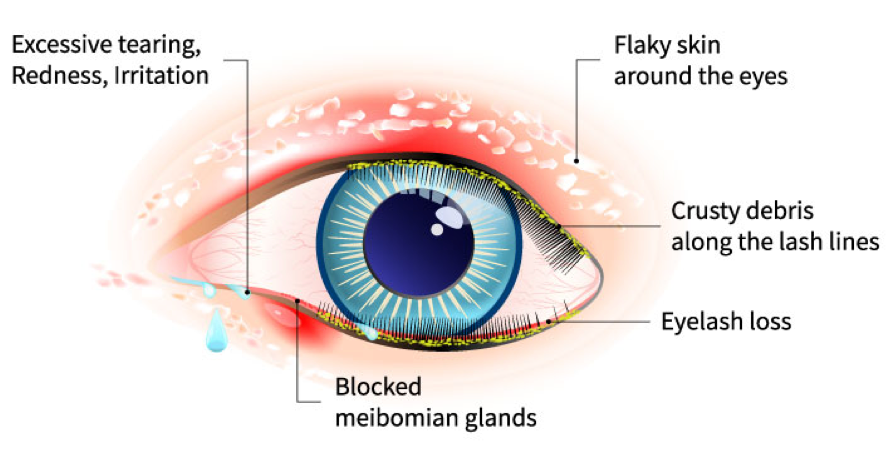Blepharitis
Definition
Blepharitis is inflammation of the eyelids. It is a very common eye problem that affects the edge of the eyelids, the eyelid glands, and the eyelash hair follicles. The primary types of blepharitis are caused by either a skin condition or an infection. You have an increased chance of developing blepharitis if you have seborrheic dermatitis, acne rosacea, and/or contact allergies. The three main types of blepharitis are:
- Infectious Blepharitis—Bacteria, namely Staphylococcus, cause an infection in the eyelid glands.
- Seborrheic Blepharitis—Skin cells shed more rapidly than normal due to oil glands that are not functioning properly. The presence of excess oil and skin cells help bacteria to grow.
- Contact Dermatitis—An allergen coming into contact with the eyelid leads to local inflammation. For example, mascara may produce an allergic reaction.
Symptoms depend on the cause of blepharitis and are usually worse in the morning. Symptoms may include:
- Redness, flaky skin, and oily secretions along the edge of the eyelid
- Crusty material clinging to the eyelashes
- Dry scales or dandruff-like material on the scalp and brows
- Itching or burning sensation
- Tearing
- Foreign body sensation in eyes
- Fluctuating vision
- Ulcers or sores at the base of eyelashes (severe cases)
- Scant, broken eyelashes
- Chalazion (nonpainful bumps in eyelid), which may become infected (stye)
- Conjunctivitis (occasionally)
Treatment
Blepharitis is a chronic condition and requires long-term management. Follow these directions 1-2 times per day as directed until your problem improves, then you may decrease your treatments to once a day or a few times a week.
- Wash your hands prior to any eye care.
- Wet a washcloth with warm water or use a warm eye mask. Place it over your eyelids for 5-10 minutes. If using a washcloth, you will need to re-warm the washcloth.
- Massage Eyelids during warm compresses or in the shower.
- Place one pump of OcuSoft foam product and with a Q-tip or a soft washcloth wrapped around your pinky finger or using I-Lid ‘N Lash pre-moistened pads, gently scrub along your eyelash roots. Be careful not to touch the cornea, which covers your iris (the colored part of the eye). Note: Look up to scrub the lower lid and down to scrub the upper lid.
- Drops, ointment and/or an oral antibiotic may be recommended depending on the severity of your problem. Follow the recommended regimen. Call the office if you have questions about your treatment.
If your eyelid condition does not improve, Dr. Shenouda may recommend BlephEx® or/and Ilux treatment.





